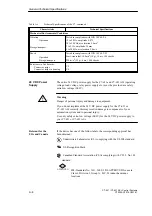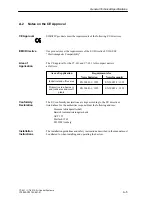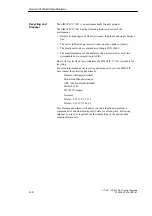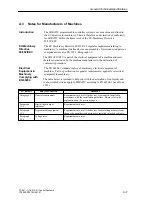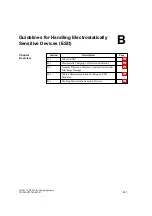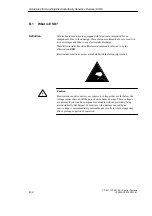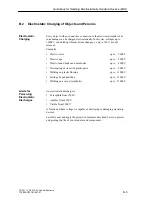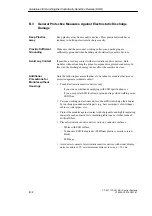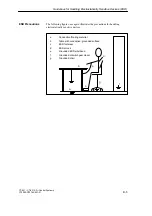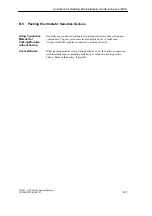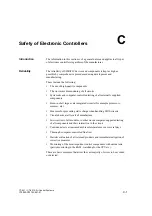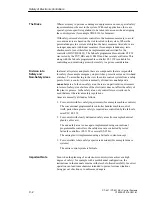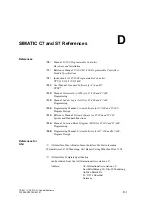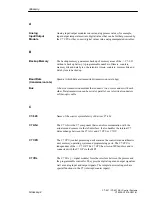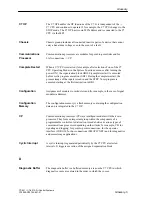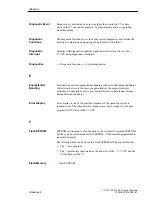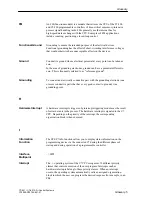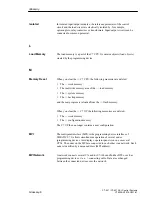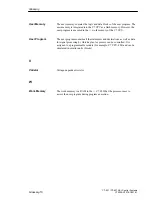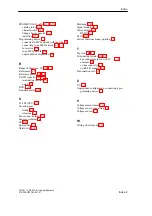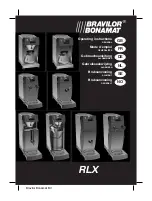
C-2
C7-621 / C7-621 AS-i Control Systems
C79000-G7076-C621-01
Wherever injury to persons or damage to equipment can occur, special safety
requirements must be met in the system. With such applications, there are
special, system-specific regulations to be taken into account when designing
the control system (for example VDE 0116 for furnaces).
With safety-oriented electronic controllers, the measures necessary to avoid
or contain errors are based on the risk involved in the system. Where the
potential dangers in a system are higher, the basic measures listed above are
no longer adequate. Additional measures (for example redundancy, tests,
checksums etc.) must therefore be implemented and certified for the
controller (DIN VDE 0801). The fail-safe programmable controller S5-95F
was tested by the TÜV, BIA and G EM III and has several certificates. This
along with the fail-safe programmable controller S5-115F is suitable for
controlling and monitoring areas where safety is a prime consideration.
In almost all systems and plants, there are components that are responsible
for safety (for example emegency stop switches, protective screens, two-hand
switches). To avoid having to the view the entire control system from a safety
point of view, a control system is normally divided into a safety and a
non-safety area. In the non-safety area, there are no particular requirements
in terms of safety, since failure of the electronics does not affect the safety of
the plant or process. In the safety area, only controllers or circuits can be
used that meet the relevant safety regulations.
Areas are normally divided as follows:
1. For controls with few safety requirements (for example machine controls)
The conventional programmable controller handles machine control
itself, parts where greater safety is required are controlled by the fail-safe
mini PLC S5-95F.
2. For controls with clearly delineated safety areas (for example chemical
plants, cable cars)
The non-safety area is once again implemented using conventional
programmable controllers, the safety areas are controlled by tested
fail-safe controllers (S5-115F or several S5-95Fs).
The entire plant is implemented using a fail-safe control concept.
3. For controllers where safety aspects are dominant (for example furnace
systems)
The entire control system is fail-safe.
Even when the planning of an electronic control system achieves a high
degree of safety - for example with a multichannel configuration, the
instructions in the manuals must nevertheless be followed carefully. Incorrect
operation can lead to mechanisms intended to prevent serious situations
being put out of action or to unforeseen dangers.
The Risks
Division into
Safety and
Non-Safety Areas
Important Note
Safety of Electronic Controllers
Summary of Contents for simatic c7-621
Page 44: ...2 26 C7 621 C7 621 AS i Control Systems C79000 G7076 C621 01 Installing and Preparing the C7 ...
Page 64: ...3 20 C7 621 C7 621 AS i Control Systems C79000 G7076 C621 01 Configuring an MPI Network ...
Page 74: ...5 4 C7 621 C7 621 AS i Control Systems C79000 G7076 C621 01 Attaching a C7 621 AS i ...
Page 82: ...6 8 C7 621 C7 621 AS i Control Systems C79000 G7076 C621 01 C7 621 Digital I Os ...
Page 100: ...7 18 C7 621 C7 621 AS i Control Systems C79000 G7076 C621 01 C7 621 Analog I Os ...
Page 101: ...8 1 C7 621 C7 621 AS i Control Systems C79000 G7076 C621 01 Maintenance 8 ...
Page 110: ...A 8 C7 621 C7 621 AS i Control Systems C79000 G7076 C621 01 General Technical Specifications ...
Page 123: ...Glossary 1 C7 621 C7 621 AS i Control Systems C79000 G7076 C621 01 Glossary ...
Page 136: ...Index 4 C7 621 C7 621 AS i Control Systems C79000 G7076 C621 01 Index ...

